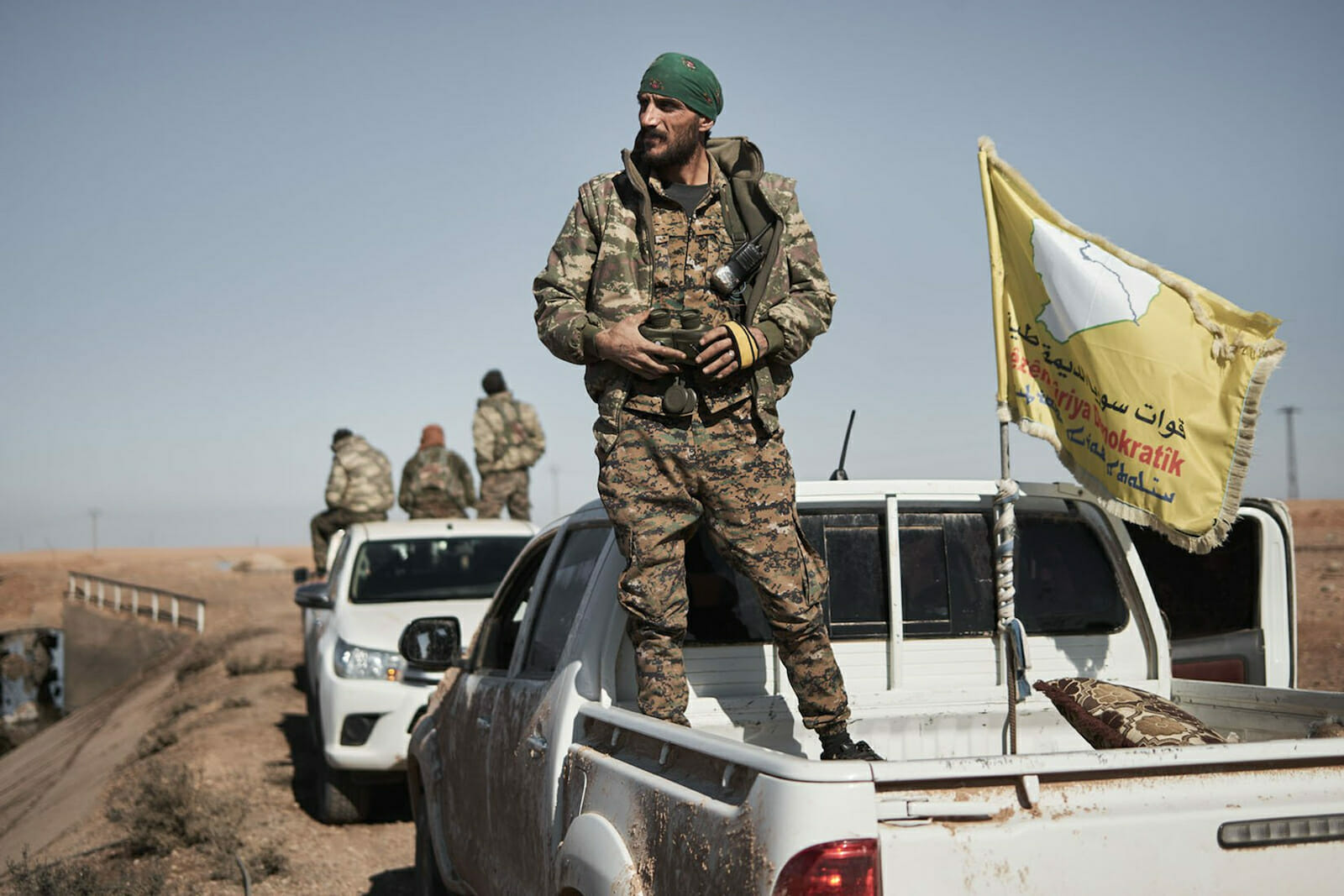
What’s Next for the Kurds?
The Kurds always knew U.S. support would eventually expire, but President’s Trump abrupt decision to pull U.S. forces out of northeast Syria has nevertheless stunned the Kurds there who, for the past three years, have been America’s loyal ally in fighting the Islamic State group. Mr. Trump’s announced pullout of roughly 2,000 U.S. troops in December from Syria, without ensuring safety for the Kurds, garnered a wave of criticism and political uproar, to say the least.
Syria’s Kurds have yearned for autonomy in the northeast corner of the country, where their population is concentrated. U.S. troops departure would leave Syrian Kurds vulnerable to Turkish threats of an invasion from one side and Syrian government forces on the other. The Damascus government has forbidden autonomy, and Turkey is fiercely opposed to it. While Damascus has been busy fighting the rebels during Syria’s never-ending civil war, the Kurds succeeded the unthinkable by setting up a degree of self-rule. The Autonomous Administration of North and East Syria (NES), is a de facto autonomous region in northeastern Syria which is comprised of a series of self-governing sub-regions in the areas of Afrin, Jazira, Euphrates, Raqqa, Tabqa, Manbij and Deir Ez-Zor.
For Ankara, the Syrian Kurdish militia, which is closely tied to Kurdish insurgents in Turkey, is a terrorist group. Turkey considers Kurdish forces in northeastern Syria to be a part of a front for the outlawed Kurdistan Workers’ Party, or PKK, a Kurdish insurgency in Turkey and has voiced its intentions of an assault against them and the Islamic State. Meanwhile, President Trump has warned Turkey it will devastate it economically with harsh economic sanctions if it attacks Kurdish forces in Syria following an American withdrawal from the country in the coming months. Unfortunately, this is not the first time the Kurds have been left high and dry by the United States and other international allies. The imperial knife in the back of the Kurds and their thirst for autonomy or independence is a prevailing theme.
Here’s the background
The Kurds are an ethnic group that today surpass 40 million people and are spread primarily across four nations: 20 million in Turkey, 12 million in Iran, 8 million in Iraq, and a little over 2 million in Syria. They speak an Indo-European language, related to Iran’s Farsi, and are primarily Sunni Muslim.
The 191,000-square-kilometer (74,000-square-mile) area Kurdish call home spans through a mountainous zone from southeast Turkey to the Zagros mountains in northwest Iran. The Kurds are not only separated by boundaries, but also by tribal and even political views that the regional powers often use to manipulate them.
Following the collapse of the Ottoman Empire at the end of World War I, the Kurds were promised an autonomous homeland in the 1920 Treaty of Sevres. However, the treaty was rebuffed by the new Turkish nationalist regime and replaced by the Treaty of Lausanne in 1923 where, among other concessions, the Allies dropped their demands of autonomy for a Turkish Kurdistan.
Twenty years later, during the summer of 1941, amid the aftermath of an invasion of the Allies in northern Iran, a Kurdish state was temporarily created with support from the Soviet Union in Mahabad, in January 1946. Unfortunately, this was short-lived and disintegrated just 11 months later. Since then, there have been ongoing Kurdish insurgencies throughout Iran, Iraq, and Turkey, in a desperate quest for autonomy.
In 1972, on behalf of Iran, the U.S. helped arm the Iraqi Kurdish rebellion against Baghdad so that its ally, the Iranian Shah Mohammad Reza Pahlavi, could further pressure the Iraqi government in a chronic border dispute. Eventually, the Shah signed a border agreement with Baghdad (in 1975), promptly ending the weapons pipeline and, consequently, the participation of the United States.
A decade later, Iraqi leader Saddam Hussein’s army waged a gruesome war, during the nearly eight-year Iran-Iraq war, and was ultimately charged with genocide for attempting to annihilate the Kurdish race through his military operations that took the lives of at least 50,000 civilians and destroyed thousands of villages. After Saddam’s capture in 2003, the U.S. helped ensure that Iraq’s new constitution included an autonomous Kurdish zone. This area is officially called the Kurdistan Region of Iraq by the Iraqi constitution and is governed by the Kurdistan Regional Government (KRG), with the capital being Erbil.
Fast forward to September 2017, in the face of enormous opposition, Iraqi Kurdistan went fearlessly ahead with a referendum on independence. Unfortunately, the Kurdish leader Masoud Barzani’s decision to hold this vote backfired spectacularly. Rather than paving the way to independence, or increasing the Kurds’ bargaining power in negotiations, it provoked an embarrassing reversal of fortunes for Iraq’s Kurds, including the emblematic and economically strategic city of Kirkuk.
In the latest twist to the Kurdish saga, the White House seems to have had a slight change of heart, announcing, last month, its intention of keeping some 400 troops in Syria. This clearly symbolic gesture could actually have a notable impact on the fate of the area, averting a security vacuum. In the long run, what’s next for the Kurds is anybody’s guess.

